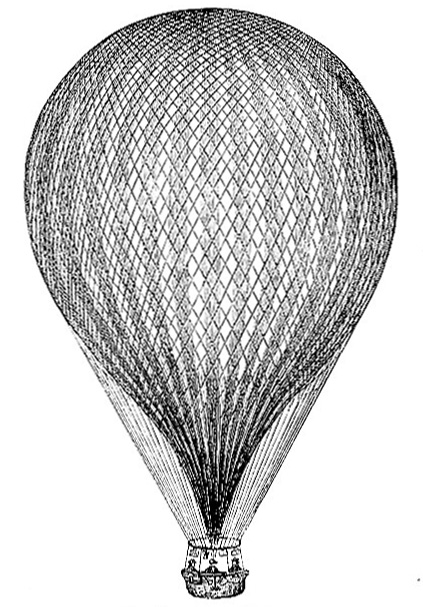1902 Encyclopedia > Aeronautics > Subsequent Famous Ascents (Non-Scientific). Equestrian Ascents.
Aeronautics
(Part 18)
Subsequent Famous Ascents (Non-Scientific). Equestrian Ascents.
Leaving out of consideration the ascents undertaken for scientific objects (very many of which were remarkable for the height attained or the distance traversed, and which will be specially noticed further on), we proceed to mention the most noteworthy ascents that have taken place and that have not ended fatally (these latter will be referred to separately).
Mr Crosbie, a gentleman who was the first to ascend from Ireland (January 19, 1785), on the 19th July 1785 attempted to cross St George's Channel to England, but fell into the sea; he was saved by some vessels that same to his rescue.
Lunardi also fell into the sea, about a mile and a half from the shore, after an ascent from Edinburgh in December 1785; he was rescued by a fishing-boat.
Richard Maguire was the second person who ascended from Ireland. Mr. Crosbie had inflated his balloon on May 12, 1785, but it was unable to take him up, when Mr. Maguire, a student at the university, who was present, offered to ascend. His offer was accepted, and he made the ascent. For this he was knighted by the Lord-Lieutenant (Monck Mason, p. 266).
On July 22, 1785, Major Money ascended from Norwich. The balloon was blown out to sea, and he was obliged to descend into the water. After remaining there seven hours he was rescued by a revenue cutter which had been dispatched to his assistance.
Mr. James Sadler attempted to cross St George's Channel on the 1st of October 1812, and had nearly succeeded, when, in consequence of a change in the wind, he was forced to descend into the sea off Liverpool. After remaining in the water some time, he was rescued by a fishing-boat. But on July 22, 1817, Mr. Windham Sadlers, his second son, succeeded in crossing the Channel from Dublin to Holyhead.
On May 24, 1837, Mr. Sneath ascended from near Mansfield in a fire-balloon, and descended safety.

The Great Nassau Balloon
At half-past one o'clock on November 7, 1836, Mr. Robert Hollond, Mr. Monck Mason, and Mr. Charles green ascended from Vauxhall Gardens, and descended at about two leagues from Weilburg, in the duchy of Nassau, at half-past seven the next morning, having thus traversed a distance of about 500 miles I 18 hours; Liege was passed in the course of the night, and Coblentz in the early morning. A full account of this trip is given by Mr. Monck Mason in his Aeronautica (1838). The balloon in which the journey was performed (a very large one, containing about 85,000 cubic feet of gas) was subsequently called the Nassau Balloon, and under that name became famous, and ascended frequently.
We ought also, perhaps, to notice a curious ascent made by Mr. Green on July 29, 1828, from the Eagle Tavern, City Road, on the back of a favourite pony. Underneath the balloon was a platform (in place of a car) containing places for the pony's feet, and some straps went loosely under his body, to prevent his lying down or moving about. Everything passed off satisfactorily, the balloon descending safely at Beckenham; the pony showed no alarm, but quietly ate some beans with which its rider supplied it in the air. Equestrian ascents have since been repeated. In 1852, Madame Poitevin, who had made several such journeys in Paris, ascended from Cremorne Gardens, London, on horseback (as "Europa on a bull"); but after the first journey its repetition was stopped in England by application to the police courts, as the exhibition outraged public feeling. Lieutenant Gale was killed at Bordeaux on Sept. 8, 1850, in descending after an equestrian ascent, through mismanagement in landing of the horse. M. Poitevin, descending in 1858, after an equestrian ascent from Paris, was nearly drowned in the sea near Malaga. Among remarkable balloon ascents must also be noticed that of Mr. Wise, from St Louis, on June 23, 1859, in which a distance of 1120 miles was traversed.
Read the rest of this article:
Aeronautics - Table of Contents
|
